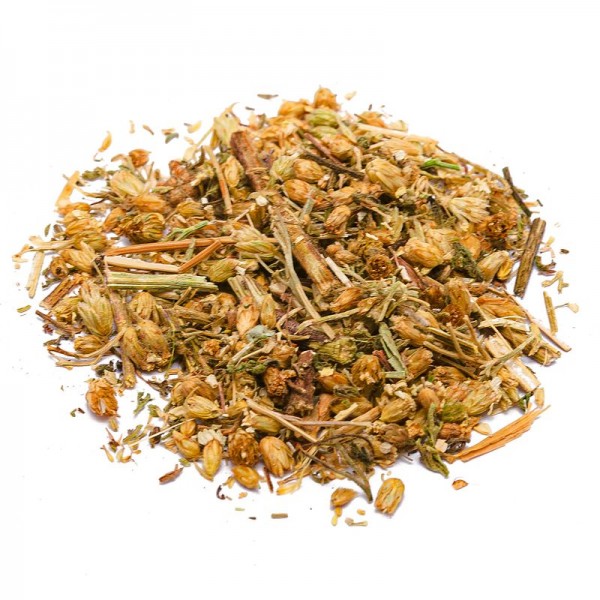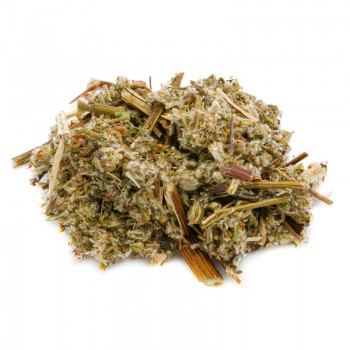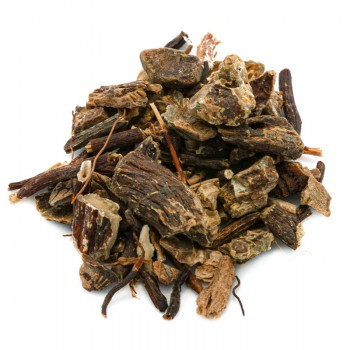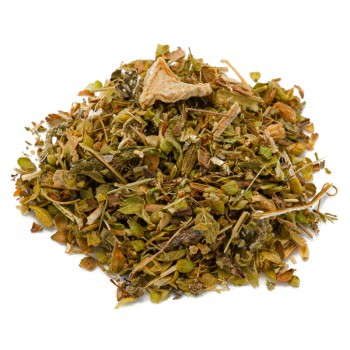This medicinal plant has been known for millennia for its properties, and popularly also known as pennina grass, wildflower, devil's nettle.
A herbal tea of Achillea millefolium has many positive qualities for our body, which include its ability to promote digestion , relieve irritation and fortify the immune system, just to name a few.
Yarrow: properties and benefits
This medicinal plant is known to be a good source of elements that protect against colds, relieving some flu symptoms.
A yarrow tea offers many useful effects to reduce the respiratory effects on the throat and nose, being endowed with natural expectorant properties.
Thanks to its ability to dissolve and release phlegm from the respiratory tract, the yarrow tea can be used to relieve coughs and soothe sore throats.
As an eupeptic herb, yarrow can promote healthy digestion by stimulating the gallbladder, and the production of digestive bile. The process facilitated by the medicinal herb, allows you to effectively digest food.
Its antispasmodic effects are important for relaxing muscle spasms and calming inflammation in the digestive system, relieving symptoms of indigestion such as nausea, stomach cramps and diarrhea.
Another benefit of yarrow is the protective ability of healthy circulation. It tones the walls of blood vessels, and helps dilate them to allow for better blood flow.
Especially for women's well-being, yarrow relieves some side effects of menstruation with these properties. Promoting blood circulation as mentioned, it supports the correct flow during menstruation.
It can naturally alleviate the painful cramps of menstruation thanks to the antispasmodic effects, relaxing the uterine muscles for general well-being.
This herb is a valuable ally for healthy kidney and bladder function, as it acts as an excellent diuretic.
The frequent expulsion of liquids allows to eliminate toxins and excess liquids from the kidneys and bladder, thus eliminating harmful substances and protecting their health.
The oils found in yarrow have also shown beneficial properties in relieving joint pain and various other irritating conditions.
In addition, its properties on the sweat glands can promote sweating to expel toxins.
Origins and History of cultivation
In ancient times, Achillea millefolium was used for a great variety of treatments.
Her name derives from the association with Achilles, the Greek hero, who is said to have taken her with him into battle, due to her ability to stop bleeding from wounds.
Some of the European names reflect this quality, including “military grass” or “woundwort”. Also in Europe it was used in the Middle Ages, together with a mixture of herbs, to flavor beer before hops were introduced. In China it was used to encourage divination, including several rituals in combination with I Ching, where long, straight sticks of yarrow are used to read the hexagrams associated with this system of foresight
In all cultures the most common use of yarrow is that of herbal tea. It has been recognized as a protective and healing plant, and has a long standing reputation among herbalists in Europe, North America and Asia.
The yarrow herb is used in the form of infusions, decoctions, extracts. Both freshly harvested plants and dried yarrow flowers and leaves are used. Leaves and flowering tops can create bitters and herbal liqueurs.
The freshly squeezed juice of the plant was the one used in ancient times to treat wounds.
Plant and flowers
The Achillea millefolium plant is a perennial that spreads easily and is considered by many to be a weed.
It is part of the Asteraceae family, and was originally present in several continents: Europe, Western Asia,and then introduced in North America in colonial times.
Its height reaches more or less 1 meter in height with the stems, it blooms from June to September. The flowers are white, long lasting, the leaves are aromatic, with a spicy scent that persists in dry compositions.
Nutritional values of yarrow
The yarrow flowers contain the haemostatic substance, the bitter alkaloid akylline, and volatile oils containing various beneficial elements, flavonoids, organic acids.
The yarrow herb contains oils, sesquiterpene lactones, tannins, flavonoids, vitamins C and K, carotene.
How to consume yarrow as a herbal tea and in the kitchen
For a good infusion, it is advisable to use for a cup (250 ml), about 3-5 grams of yarrow, with water at 100 ° C. Leave to infuse for 5 to 8 minutes, before drinking the herbal tea.
Yarrow herb is used for both infusions, decoctions and extracts - using both freshly harvested parts and dried flowers and leaves.
Leaves and flowering tops are also used for the creation of bitters and herbal liqueurs.
In traditional medicine recipes, yarrow was combined with plants such as lavender,
sage, calendula and mint.
The most popular combinations were: sage and yarrow to stimulate the flow of bile, helping the functionality of the liver and stomach; yarrow and lavender against flatulence and swelling; with calendula for hemorrhoids; peppermint combined with yarrow helped with cold and flu symptoms.
Yarrow: side effects and contraindications
In some cases, and when consuming excess doses of Yarrow, it is possible to experience gastric irritation phenomena, so it is to maintain the correct doses of herbal tea.
The consumption of yarrow is contraindicated during pregnancy and lactation. Due to its properties on the blood flow it is not recommended for those who follow treatments with oral anticoagulants, heparin, with antiplatelet and fibrinolytic agents.











 No reward points for this product.
No reward points for this product.


